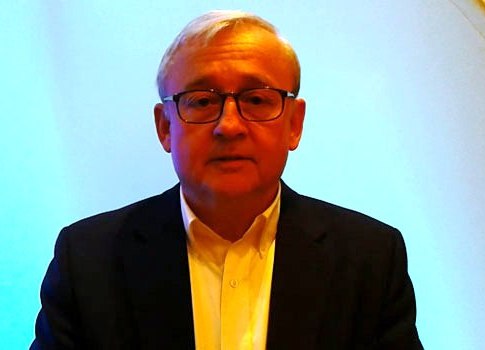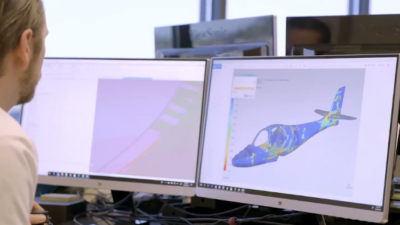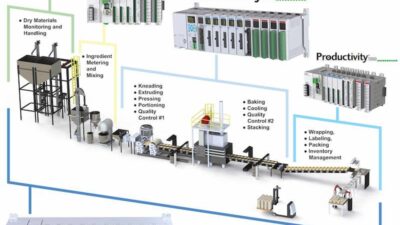Automation profitability tutorial: As controls and automation address the world’s greatest challenges, don’t just throw new technologies at tired processes. Redesign processes first for the greatest value, said Dr. Peter Martin, vice president business value consulting, Schneider Electric, at the 2015 CSIA Executive Conference. Control system integrators need to make value measurable, help industry focus on value, use automation to drive value, and consider automation’s real value. See related video: "Redesign processes first, then apply automation to solve problems."

Automation and control engineering experts are the most valuable people this industry has, said Dr. Peter Martin, vice president business value consulting, Schneider Electric, at the 2015 CSIA Executive Conference. To get more value from automation, Martin said: 1) Make the value measurable; 2) Help industry focus on value; 3) Help others know automation can drive great value; and 4) Consider the real value automation experts can provide. See related video: "Redesign processes first, then apply automation to solve problems."
Martin’s presentation, "The Future of Automation: Meeting the World’s Greatest Challenges," noted with some irony that among the greatest challenges is to help those involved understand the tremendous value that automation and related technologies bring. His edited comments follow.
Get past cool features
After interviews with plant managers at 20 sites, most liked the control system and loved the graphics and configurator, but no one understood the business value of the automation installed or could say whether or not the plant was running better than it had 20 years prior, with pneumatic-based automation.
"If fundamental business isn’t better with the installed technology, then we have a problem. How can we get the value from the automation?" he posed. Additional interviews with more than 2,000 executives provided insight that those involved generally believed that technology was the solution, but there was no clear understanding of the problem or of the value that technology could offer.
Solving big problems
Technologies are available to solving the world’s big problems, such as those in energy, water, food, health, environment, or life needs, and it’s time for engineers to take these on, Martin said.
Low-cost critical energy would help resolve daunting challenges. With economical energy, clean water issues are resolved, preventing a half-million babies from dying each year because of lack of fresh water or use of tainted water. There’s no excuse for this. We know how to desalinate but need low-cost energy. Dubai uses 50 million gallons per day to water a golf course. If we can do this, we can create gardens where needed, Martin said, to provide nourishment as needed.
Better tuning, negative carbon impact
A nicely tuned automobile will perform better. "Our jobs are to keep plants tuned."
In India, Martin said, the largest integrated refining plant is so large it has 220 km (about 137 miles) of roads in the plant. Yet the plant has a negative carbon impact because it runs well, owners built a mango forest in the plant, and it is now the second largest mango producer in world. Mango trees are very efficient in capturing carbon. "Don’t forget what we exist to accomplish. If we recall and think that we can do so, the world can be a better place."
Value perception, measurements
Value perception varies by responsibilities. Executive management sees profitability; operations management sees production; maintenance management sees availability and cost; project management measures on time, on budget, and risk metrics; operators see alarms and throughput; plant engineers look at efficiency and safety; and environmental health and safety (EH&S) personnel look at safety and environmental issues.
The best talent in industry work at system integration firms and their client businesses, Martin said, but because "we’re not measuring the right things, we get the wrong results."
Often there are no common definitions, and measurements misalign. A common example is when the next shift changes alarm settings because they have different metrics.
"Everyone must be aligned on critical performance measures. This is YOUR problem," Martin pointed to the audience, "though you didn’t create it."
Lack of ROI understanding
How do you know when the control system is undervalued? A danger sign is that it takes 30 years to replace. With a project value model, there’s always some measurement of return on investment (ROI). Cost of the investment is one measure over the lifecycle (beyond price). Benefits should continuously improve over the life of asset.
When a project began, there was a stated ROI. When the new specification is based on replacing the functions of the old system, those involved don’t see the value. If no one figures ROI regularly, then the chief financial officer thinks there’s no ROI, no value, in the control system.
Without measurements, someone might think there’s more ROI available by buying storm windows for a plant in Minnesota.
Control systems are designed to improve efficiency. Plants are in control, but profitability is out of control, because no one has any real-time clue about profitability. No one knows when there’s a bad month until five days after closing the quarter, and we’re always surprised. Running the plant efficiently is necessary but is not enough anymore. A business profitability value model is needed.
Today’s plant cost accounting systems are monthly, a default from the industrial revolution, and it wasn’t a problem then because variables seldom changed. Now, variables change faster. Profits are a control loop.
Four value blockers
There are four value blockers, and none are your fault, Martin said, but we need to understand them to do our jobs well. "Every one of them is your problem," he told the automation system integrators in the audience. They are:
- Technology focus
- Replacement automation
- Project team approach
- Business measures.
Go to the next page (click the link at the bottom) to learn more about what Martin had to say about the four value blockers and how to overcome them.
1. Technology focus
Function is control, and the automation platform delivers that function.
In the 1970s, we’d discover a problem in manufacturing, get together, solve the problem, and find technology to solve the problem. Then, like now, there was a divide between control and digital technologies. After awhile, as new technologies emerged, we had to have them, whether they solved problems or not.
"What we do with technology is what matters. What problem are you solving? Focus on the problem not the technology integration."
2. Reverse replacement automation
Do you add value when upgrading automation? Most projects do not. Why? Most brownfield automation replacements are exact replacements of the prior system. These retrofit projects define the system point by point, define a specification that is exactly the old system, and then apply for a budget. [Note: the audience was amazingly quiet at this point, perhaps because they knew how true this often is.]
Automation vendors and system integrators do not want to lose the project, so they deliver the bid that is sought, and it provides no value.
Any market that has this characteristic is a commodity market based on price. We are the most valuable product and talent available to a plant, Martin said, and no one knows it because we refuse to add value.
"Don’t worry," the customer usually says, if you protest this approach. "We know. Later on we’re going to fully apply the new technology." Then, "later on" never comes because engineering staffs at these plants are often smaller and busier than ever.
In an informal study, the International Society of Automation (ISA) asked, "What percentage of automation technology in place is actually in use?" Answers ranged from 25% to 40%, Martin said.
3. Take a project team approach
Using a project team approach, typically a plant:
a. Applies for capital by using ROI estimates
b. Produces a specification for the work (typically a direct-replacement specification which minimizes benefits by ignoring a solutions-based focus or without a process redesign)
c. Approves the capital
d. Assigns a project team (with on-time and on-budget performance measures for the team, rather than measures that focus on measuring and adding value)
e. Executes the project.
In this case, a young engineer may say: "I can add $5 million in value if we do it this way." And the project manager will likely reply: "Do that, and you’re off the team. We’re not measured on value; we’re measured on on-time and on-budget delivery.
"We are a value-opportunity industry locked into processes that do not add value. We need to sell continuous economic improvement and ensure the finance persons see it. They must know how much value we’re adding. We have to fix problems by looking at performance measures. We have to think about accounting because if we don’t fix this, no one will. Lifecycle costs are not measured. Lifecycle benefits are not measured," Martin said. Instead of automation suppliers saying that they’re the lowest lifecycle cost, they need to say they offer the highest lifecycle benefits, Martin advised.
4. How do you measure?
Martin said that research shows that CEOs, CFOs, and COOs usually choose not to see or understand engineering-related key performance indicators (KPIs).
Because of that, appropriate automation and manufacturing information technology (IT) investments often get overlooked because the value isn’t understood.
To compensate for this reporting gap, Martin said, "We need to model the plant in real time. Plant sensors tell you what’s going on, but in the wrong language. We need to convert that data into financial information. Clearly this makes engineers uncomfortable. Accounting is an unnatural science. Humans invented it. The answer is to use the control system as a business system to create real-time metrics for financial-minded executives."
"Why? Because profits are a control problem," he explained.
Electricity prices can change every 15 minutes in the U.S., every 5 minutes in Spain, and every 20 minutes in the U.K. Natural gas prices change every 15 minutes. Copper prices change every 35 seconds. Because of these and other fluctuations, Martin said, overall equipment efficiency (OEE) can go up while profits go down, so there’s a need to measure more than OEE.
"Engineers know how to solve a control problem. If you cannot measure it, you cannot control it. The challenge is using KPIs in context with real-time accounting measures," Martin said.
Dynamic performance measures often populate dashboards, but the wrong data translates into the wrong behavior.
"The day of the control engineer is ahead of us, not behind us. You don’t have a clue how valuable you are. Engineering teams that have impacted history have been those who have measured value. I can deliver 100% return in less than 6 weeks if we measure the right things," Martin said. "How would it be," he asked, "if you received $1 million and gave back $6 million in less than a year?"
Less than 5% of a capital budget is automation. Why? The right things are not measured. We need to measure correctly to get more automation budget.
A real-time profit control loop will measure, empower, and improve.
Profit can be improved dramatically at the operator level. Strike the word "laborers" from conversation. These are performance managers, and if they know the value of the right metrics to bring to profitability, they won’t change the metrics they measure after each shift.
To begin, first measure the baseline, then shift process control to profit control. When measuring like this, constraints will appear. Free-up those constraints and increase profits.
Although the industry cannot yet measure safety risk in real time, tying safety to profitability will help. A company’s number-one priority is profit, not safety, but by putting safety culture in the mainstream and by showing that safe operations are profitable operations, a company can drive profits through safety. Automation experts and control system integrators are the most valuable people this industry has. Don’t just throw technology at the same process, or you’ll be locked in for 30 years.
"Make your value measureable."
– Mark T. Hoske, content manager, CFE Media, Control Engineering, [email protected].
Key concepts
- Automation and control experts should help the company understand that properly applied automation investments increase profits over time.
- Value of automation isn’t realized unless profit metrics are used instead of engineering metrics.
- Control engineering experts need to make their value measurable.
Consider this
If people in your organization don’t realize the value of automation, can you use this advice to help?
ONLINE extra
Martin is one of six Edison Masters in the Schneider Electric fellows program; about 130 to 150 "fellows" meet every other month to share ideas, he said. He also has an ISA life achievement award. See the video linked to this file and read other control system optimization articles from Martin, linked below.
See related video: "Redesign processes first, then apply automation to solve problems."



